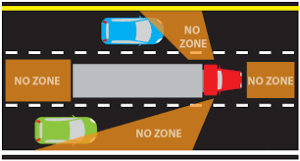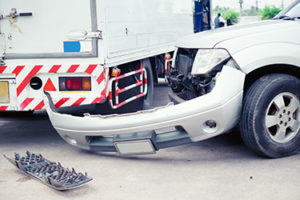If you are driving on the highway, it is critical to understand the “no-zone” for truck drivers and to avoid it so that you are not involved in a serious or deadly truck accident. When a serious trucking accident does happen, it is important to know that you may be eligible to seek financial compensation for your losses. At Sabbeth Law, our specialization in trucking and commercial motor vehicle cases means we have the experience necessary to help you seek the compensation you deserve.
We are members of the Association of Truck Accident Attorneys, the AAJ Trucking Litigation Group, and we were recently selected to the National Trial Lawyers Top Truck Accident Lawyers. We get on the scene ASAP, and in significant crashes, we so will the insurance company investigators for the at-fault truck. We do everything we can to beat them to the scene as they often have tricks they will use that can alter the nature of the evidence.
Our national network has allowed us to secure the best experts and resources from across the country, and we have 8-figure and 7-figure results. We are built for these types of cases and so handle them in all corners of Vermont and New Hampshire. We make it a point to go to our clients so they are not forced to travel to us.
We want to tell you more about truck drivers’ no-zones and to help you understand more about staying safe on the road.
Common Trucking Accidents
Trucks can collide with other vehicles in different ways, posing unique threats to those around them. For example, some of the more common accidents we see include:
- A truck that rear-ends a vehicle in front of it might actually ride into the backseat, potentially killing anyone sitting in the back. Overrides occur when a car stops quickly in front of a truck or the truck driver loses control of their vehicle.
- A passenger car that crashes into the back of a truck can become wedged underneath. Underrides often occur when a truck suddenly switches lanes or unexpectedly stops.
- With its high center of gravity, trailers are ripe for rolling onto their sides when drivers take corners too quickly. Sometimes wind can also cause a rollover.
- Trailers are attached to tractors with a “coupling.” When this joint fails, the trailer can swing out in a perpendicular fashion, striking vehicles in the adjacent lanes.
- Flying cargo. When cargo flies off or spills out of a truck, it can strike other vehicles, causing accidents.
Typical Injuries
Because of their size, commercial trucks can cause devastating injuries. If victims do not die, they might face a life of pain and suffering. Common injuries include:
- Traumatic brain injuries can affect your ability to walk, talk, think, or remember.
- Spinal cord injuries can compromise your ability to feel sensation or to move.
- Dismemberment and amputation of limbs.
- Burns cover large sections of the body.
Even less serious injuries like cuts or muscle strains can quickly develop complications. For example, a cut might become infected and a strain can press on nerves, causing chronic pain. You should always visit the doctor or hospital soon after an accident to fully document the extent of your injuries.
Trucks Have “No-Zones” When it Comes to Other Drivers
Large trucks, according to the Insurance Institute for Highway Safety (IIHS), usually weigh about twenty or thirty times as much as passenger cars, and it is more difficult for big rig drivers to see smaller motor vehicles when they drive in certain areas near 18-wheelers. Many automobile drivers might understand the idea of a “blind spot,” or a place around the car—while it is in motion—that the driver cannot adequately see by looking in his or her rearview and side mirrors. The no-zones for a large truck are essentially the blind spots that exist for truckers, although they are more varied and numerous than the blind spots that a driver of a passenger vehicle experiences. Given the sheer size of big rigs, no-zones exist in several areas.
No-zones exist when a truck is driving on the highway or another road, and when it is making a wide turn. Motorists need to understand that there are risks of approaching a trucker’s no-zone anytime their car is behind, in front of, or alongside of an 18-wheeler.
How to Identify a Truck’s No-Zones
If you are driving in front of a truck, you need to know that the no-zone is anywhere from 20 to 25 feet in front of the truck. To  put it another way, if you are in a space that is anywhere from 20 to 25 feet in front of the big rig, the truck driver may not be able to see you. Rear no-zones are much larger. Indeed, if you are driving behind a large truck, you should plan that the no-zone exists for about 200 feet behind the truck.
put it another way, if you are in a space that is anywhere from 20 to 25 feet in front of the big rig, the truck driver may not be able to see you. Rear no-zones are much larger. Indeed, if you are driving behind a large truck, you should plan that the no-zone exists for about 200 feet behind the truck.
You may have seen stickers on the back of trucks that state, “If You Can’t See My Mirrors, I Can’t See You.” Accordingly, if you are driving behind a big rig, you need to keep in mind that the driver cannot see anything directly behind him or her for a distance of approximately 200 feet. There are also no-zones alongside a truck. Because of where the driver sits in a U.S. truck on a U.S. road (to the left), the no-zone is wider to the right of the truck than to the left. This is one of the key reasons that motorists are told to always pass a semi-truck on the left side. No-zones are about 2 lanes wide to the right, and about 1 lane wide to the right.
When trucks make wide turns, their no-zones can change a bit. In a wide turn, space all alongside the truck on the turning side is often part of the truck’s no-zone, and a car can get stuck within it.
Be Safe Behind a Large Truck
You can drive safely around trucks, recognizing their no-zones and taking safety precautions. Consider some of the following tips:
- Try to drive near a large truck in a position where you can see the driver’s face—if you can see the driver (in a side mirror, for example), then you can feel relatively certain that you are not in a trucker’s no-zone;
- Always pass on the left side of a large truck, and when you do pass, ensure that there is sufficient distance for you to pass safely; and
- When you must drive in a truck no-zone, do it quickly and avoid traveling for long distances within the no-zone.
Compensation for Your Losses

In Vermont, injured motorists can receive compensation for all economic and non-economic losses suffered as a result of a trucking accident. For example, economic losses include:
- Medical bills to treat your injury
- Future medical care, if you need ongoing treatment
- Lost wages
- Loss of future earnings, if you cannot return to your old job because of the injury
- Damage to your vehicle involved in the crash
You might also receive compensation for certain non-economic losses, such as:
- Pain and suffering
- Mental anguish
- Disfigurement
- Scarring
- Disability
- Loss of enjoyment of life
Your spouse might also have a legal claim for “loss of consortium” for the loss of care, guidance, companionship, and affection as a result of your injuries.
Contact a Trucking Accident Lawyer Serving Clients in New Hampshire and Vermont
Do not hesitate to get in touch with an experienced Vermont and New Hampshire trucking accident attorney to learn more about filing a claim for compensation. Contact Sabbeth Law today to get started on your case.
